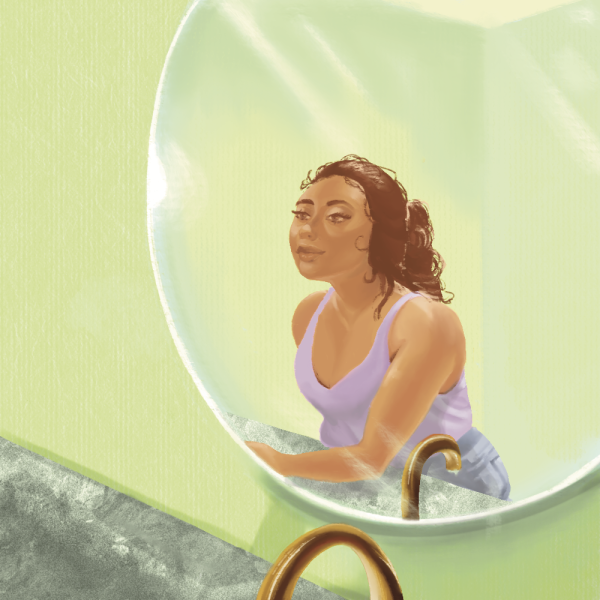Guest Column: Scary men different from scary women
October 29, 2013
With Halloween trying to sneak up on us, it’s time to look without fear at the differences between what makes men scary and what makes women scary.
For example, your male villain in a horror movie must have third-degree peeling burns and open sores over most of his body; that’s a given. It’s a plus if he’s wearing gloves with knives on the fingertips, like Freddy Krueger from “A Nightmare on Elm Street.” If he has bad breath and a low credit score, even better.
Or else he can choose the ever popular wearing of his victims’ skin over his own, as do those curiously bespoke tailors from either “The Silence of the Lambs” or “The Texas Chainsaw Massacre.”
And if a screen villain really wants to make a lasting impression and seriously embrace a truly effective horribleness, he can have nails driven into his skull like the central figure from “Hellraiser.” He’s made piercing into a whole new kind of art form.
OK, so now let’s compare this to what female characters must do to be wildly frightening to the average male viewer.
In contrast to oozing sores, flayed bodies and nails in the skull, what did Charlize Theron need to do to play so memorably, mortally gruesome a villainess and murderess that she won an Oscar for the role?
What Theron needed to do in “Monster” was gain a little weight and not do her hair properly.
What had men pants-wettingly terrified about the film was not that Theron played one of the few serial killers who systematically murdered male victims: It was, instead, that dazzlingly gorgeous Charlize Theron could look bad simply by installing prosthetic teeth and doing weird stuff with her eyebrows.
Female characters, you see, don’t have to be preternaturally disfigured or animal-alien-human-hybrids; all they need to do is cry, yell and make a scene.
At this moment in our culture, it’s not Carrie from Stephen King who scares men, but Carrie from “Homeland.”
CIA operative (retired) Carrie from “Homeland” is creepier because she’s way more out of control than Carrie-the-pig-blood-prom-queen. “Homeland” Carrie has fallen from a more powerful position and she has access to the secrets, not of high schoolers, but of nations. Frankly, the last thing she is worried about is getting her period.
And while we’re speaking of Stephen King, it’s not Kathy Bates from “Misery” who really made the men of America flee in fear from multiplexes; it’s Kathy Bates from “About Schmidt” who did that.
All Kathy Bates had to do in “About Schmidt” was get into the hot tub naked. All she had to do was reveal a bouncy woman’s body.
Hobbling James Caan with an axe when acting as his nurse in “Misery” apparently absolutely pales in comparison to her lack of shame in “About Schmidt,” even though, as many of us recall, Jack Nicholson himself was not exactly a body double for, say, Alexander Skarsgard.
It’s tricky for a female character to play a horror-queen role on the screen because, as one of my male friends put it, the phrase “scary woman is redundant.” Our super villains, like our superheroes, remain a masculine prototype of a very certain type: they are unmarried and tend not to have deeply complex dating lives even when they are given complicated emotional back stories.
Sure, Superman had “issues” concerning his family of origin, but Lois Lane was never much more than a nag in his life. Batman had to deal with loss and grief, but Catwoman was basically on a quest for a litter box of one’s own.
How about Wonder Woman? One look and you knew exactly what everybody was wondering: “Are they real?”
So in celebration of the season, here are movies so chilling to everyman that they will send your guy into a panic the moment you hit “play”:
1. “Titanic”
2. “The First Wives Club”
3. “Little Women”
4. “Precious”
5. “Divine Secrets of the Ya-Ya Sisterhood”
6. “A Walk to Remember”
7. “Notting Hill”
8. “27 Dresses”
9. “Thelma and Louise”
10. Tie: “Wuthering Heights” or “Jane Eyre” — any adaptation, any director, any time period.
Gina Barreca is an English professor at the University of Connecticut, a feminist scholar who has written eight books, and a columnist for the Hartford Courant.
























